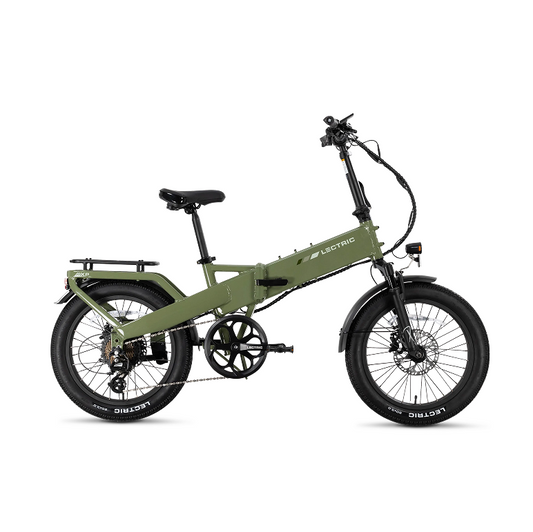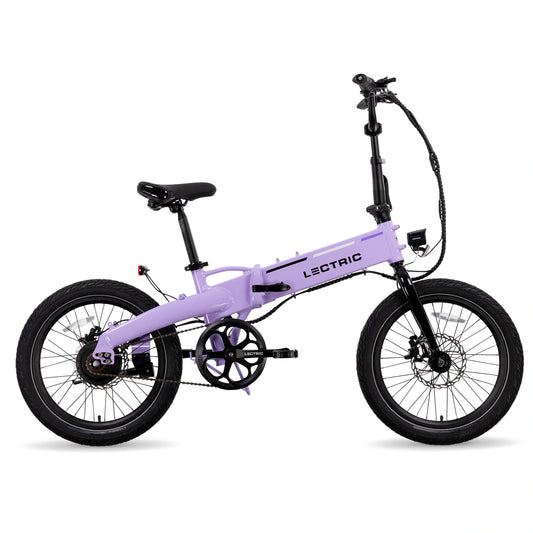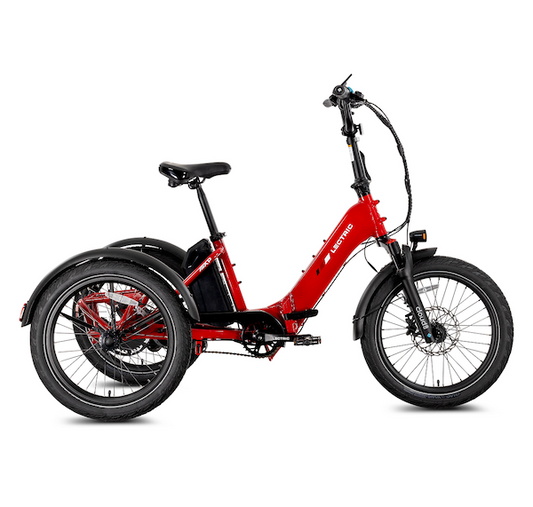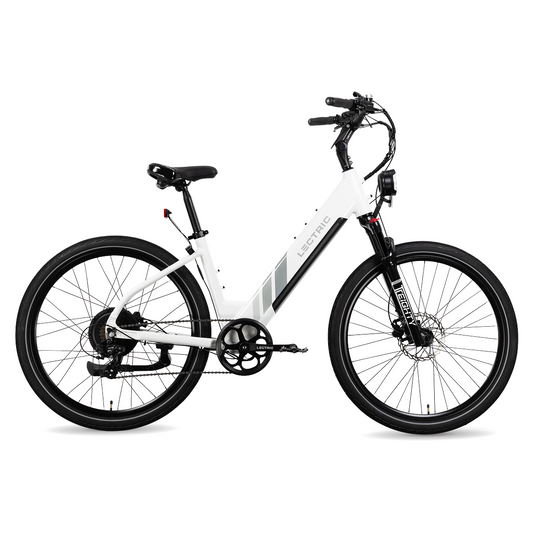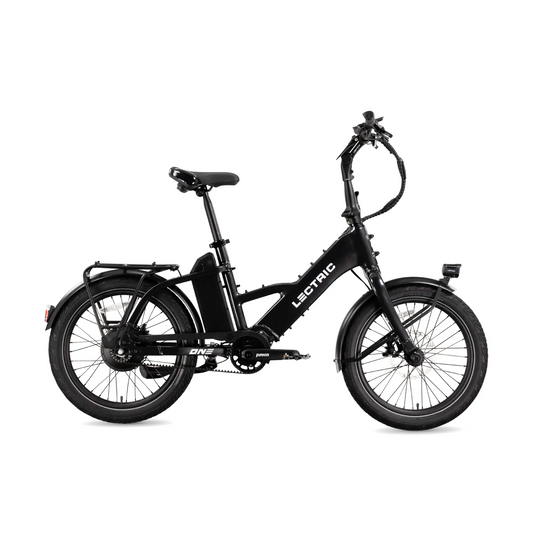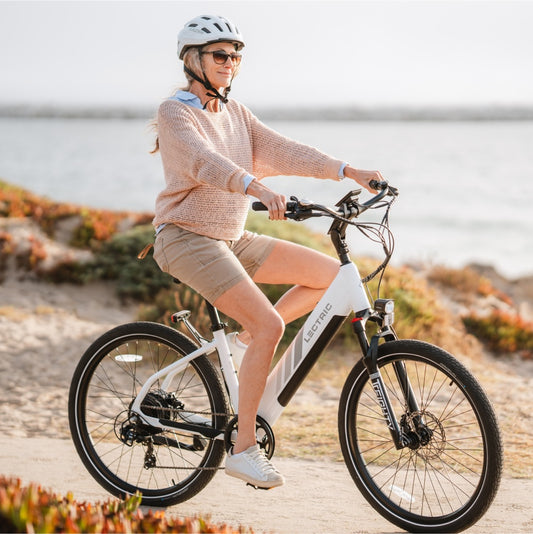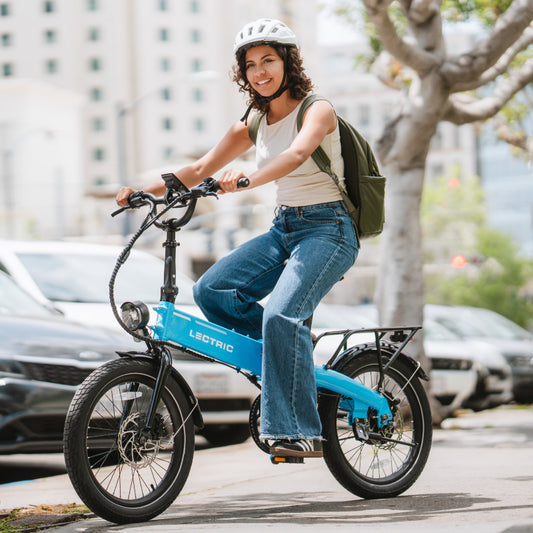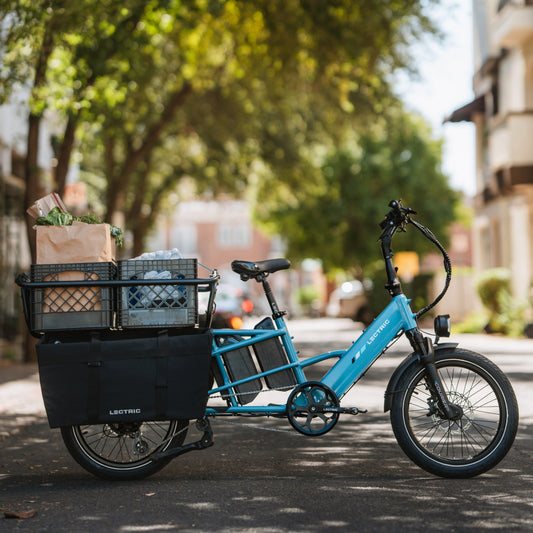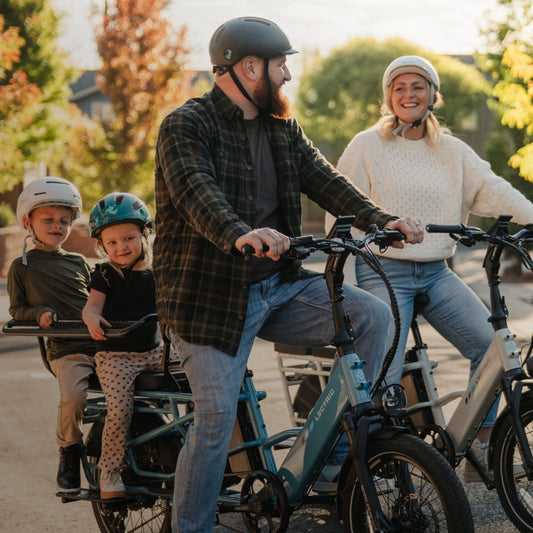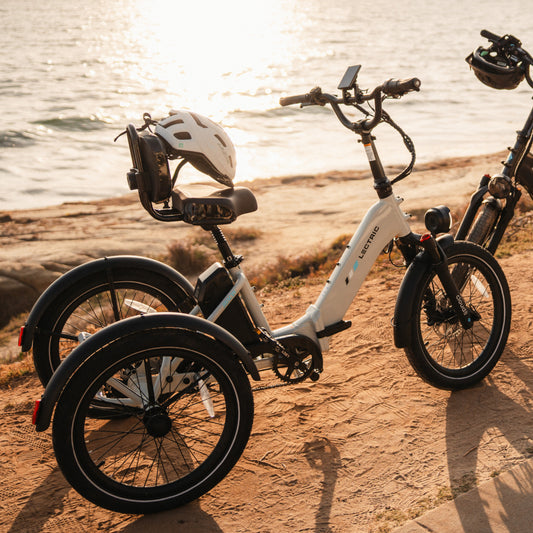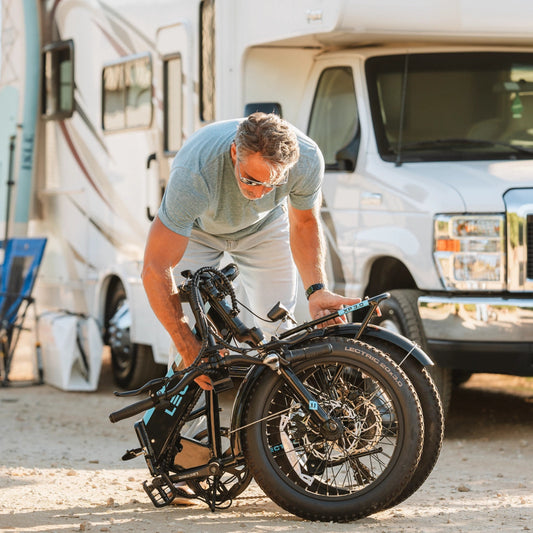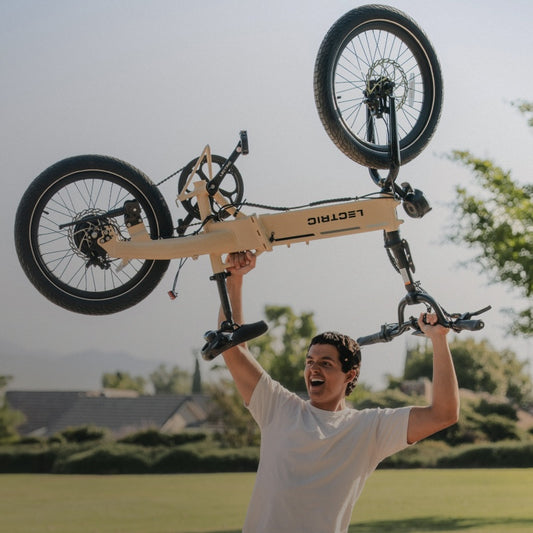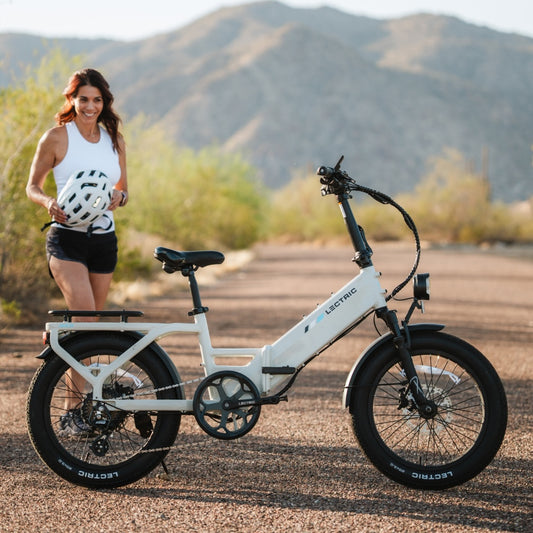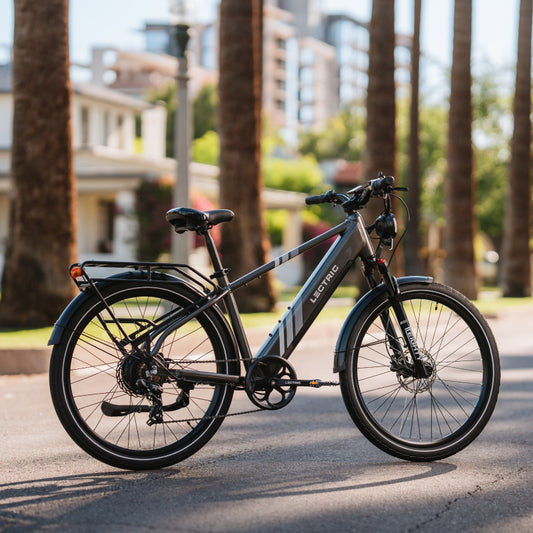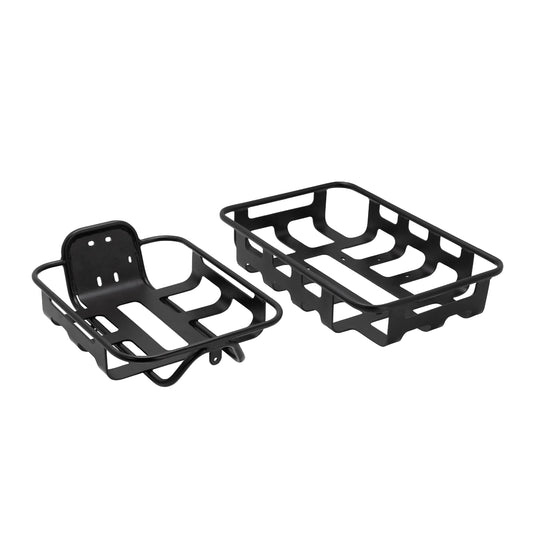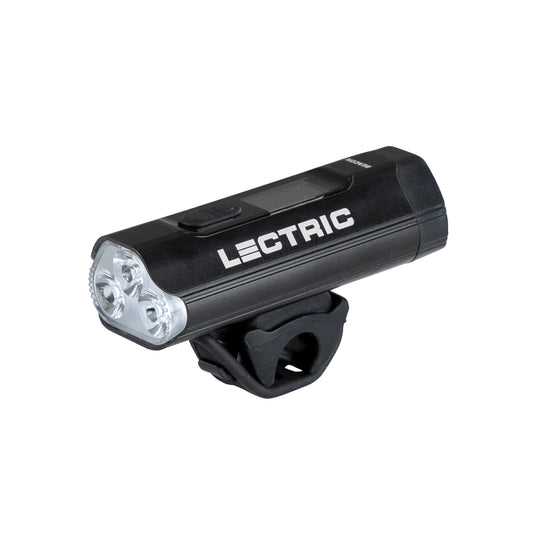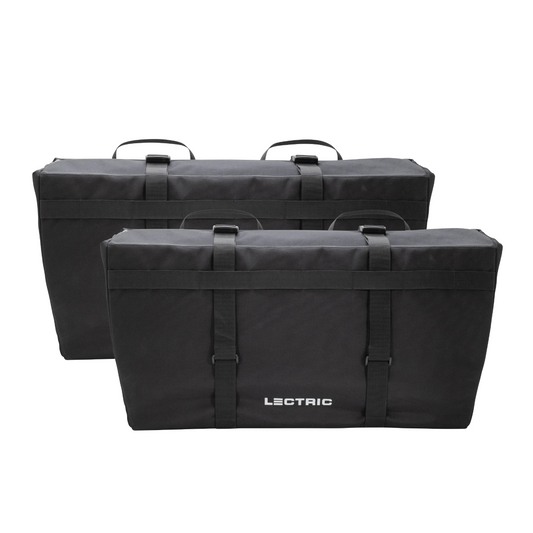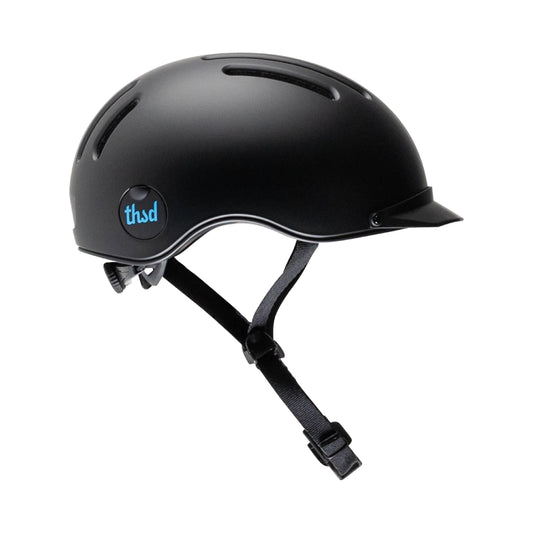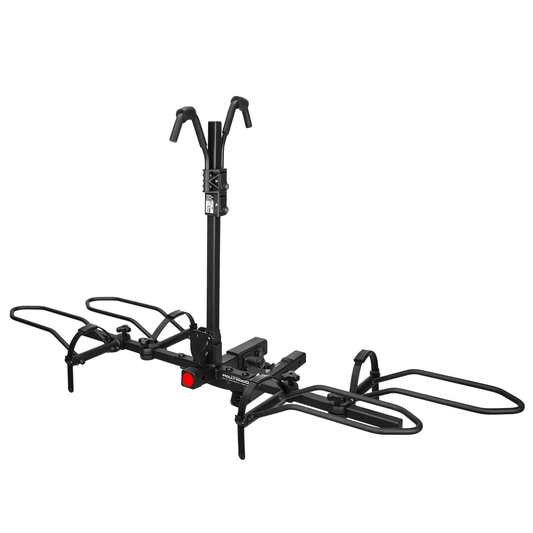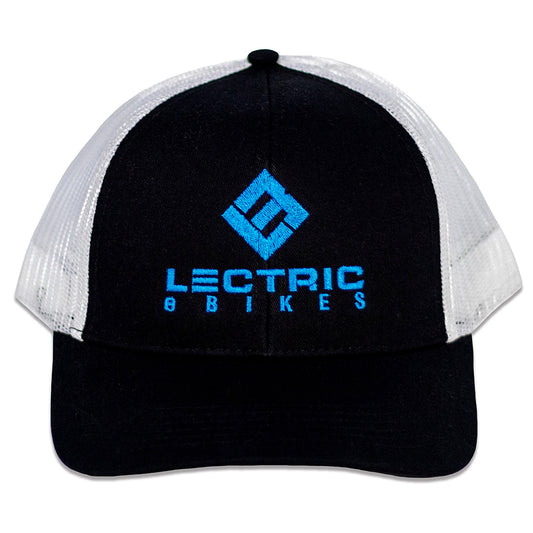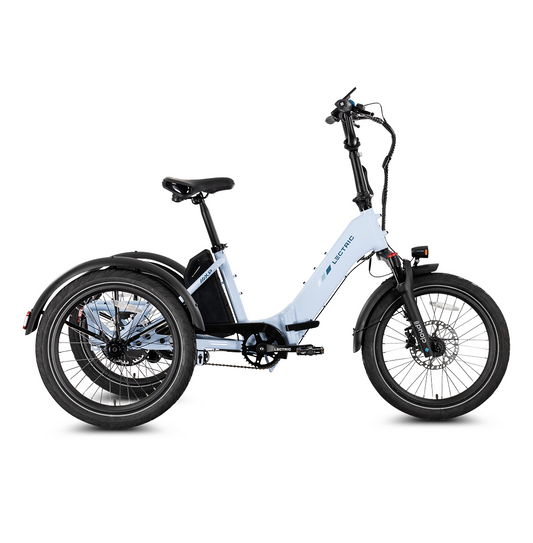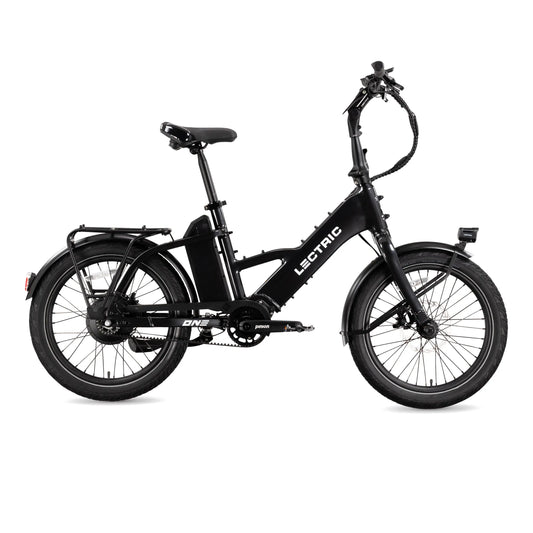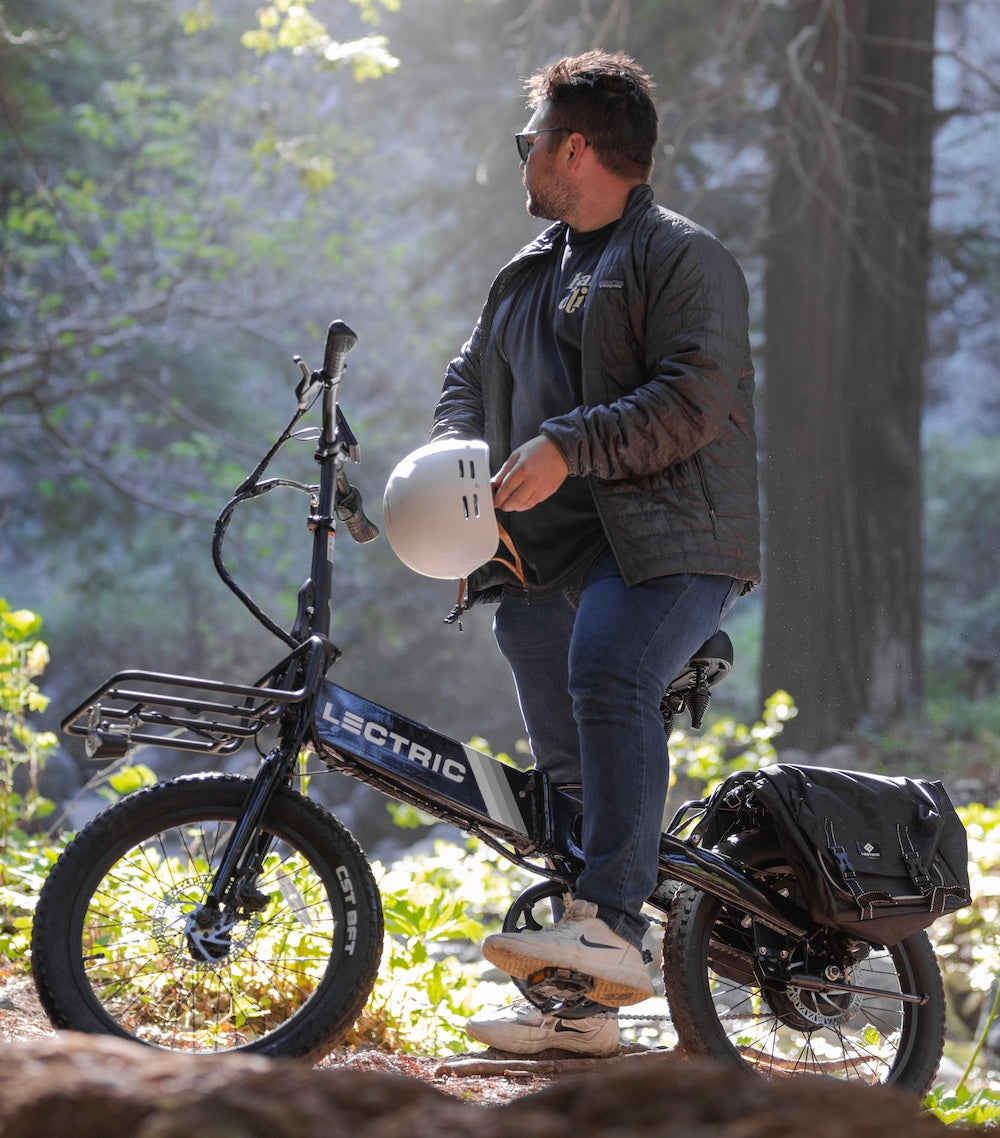Electric bikes seem to be the talk of the town. Whether you've seen your neighbors riding them, had your food delivered on them, or you've heard the buzz about them on your national and local news channels, there is no doubt that the eBike "revolution" is in full swing.
As the buzz about eBikes only continues to grow, riders new to the eBiking game may be wondering: "How do electric bikes work?"
Electric bikes really are the way of the future and can be beneficial to the environment, your health, and the greater well-being of city infrastructure. Let's take a look into how they work!
Electric Bike Design
Each brand name and type of electric bike brings its own standards and benefits, but all of them include two important components: A long-lasting battery and a powerful motor.
eBike batteries are typically removable and must be inserted while you ride to allow the motor to engage. They take about 4-6 hours to charge fully, and mileage ranges vary depending upon multiple factors including battery amperage, rider weight, terrain type, and more! Without a battery, the eBike's motor would have no way of engaging, and the bike would function as a conventional bicycle.
Motors for electric bikes can range from 250-1,000 watts. There are hub motor eBikes, as well as mid-drive motor eBikes, and each of them comes with its own perks and benefits. Regardless of motor wattage and type, the motor is the primary "muscle" of an eBike, and it is what gets your wheels turning from the get-go.
In terms of Lectric eBikes specifically, co-founders Levi, Robby, and Brent each had differing focuses when it came to their core eBike design. Brent wanted an affordable price point, Robby wanted efficiency in terms of engineering, and Levi wanted the design to be accessible to the masses. They achieved all three of these focuses with the design of Lectric XP™ series!
Electric Bike Throttle
As simple as it sounds, riders who are unfamiliar with electric bikes often wonder "do you have to pedal an electric bike?"
The reality with throttle-enabled electric bikes is that you actually do not have to pedal if you do not wish to. The throttle will allow you to propel your eBike forward with the twist of your wrist. By twisting the throttle, the eBike's motor engages with a specified amount of power, depending upon how much torque is applied by the rider, and propels your wheels forward.
Throttle-powered eBikes are great for folks who like to be able to take off on a whim or enjoy the feeling of riding a moped, and having the power of a 500W motor at their fingertips.
Electric Bike Pedal Assist
Another way for the rider to engage the motor of an eBike is by using a pedal assist function. With pedal assist, the rider controls the motor through their pedaling. You can think of this similarly to how the throttle works, but the trigger is pedaling instead of twisting your wrist.
How does the bike know how often and hard you're pedaling, you may ask? Devices called cadence and torque sensors inside the eBike motor measure how fast and how hard the rider is pedaling, thus providing the perfect amount of power to your ride.
As in Lectric eBikes, there are often multiple levels of pedal assist, designed to provide the rider with the ideal amount of assistance that they seek on any given adventure.
Pedal assist options make electric biking a great resource for riders enduring rehabilitation, struggling to make it up hills and tougher terrain on a conventional bicycle, or simply looking for a more relaxed and enjoyable ride.
Electric Bike Classifications
When it comes to eBikes, there are three different "classes" recognized by nearly two dozen US states. Each of these classifications has to do with the two main electric power options on an eBike: Pedal assist and throttle.
It is important to verify electric bike classification requirements before using certain trails, visiting national parks, and exploring certain cities! See below for an outline of each eBike classification:
- Class 1: Pedal assist only, with a maximum speed of 20mph.
- Class 2: Pedal assist and throttle options, with a maximum speed of 20mph for both functions.
- Class 3: Pedal assist and throttle options, with a maximum speed of 28mph for pedal assist and a maximum speed of 20mph for throttle.
All Lectric eBikes fall under the eBike classifications 2 and 3, since they all contain both pedal assist and throttle options.
We can only expect the interest in eBikes to intensify as more and more riders hit the roads in an electrifyingly impactful way. With more eBikes out there replacing car trips, more carbon emissions will be eliminated from our great green earth. If you ask us, that is certainly something worth buzzing about.
